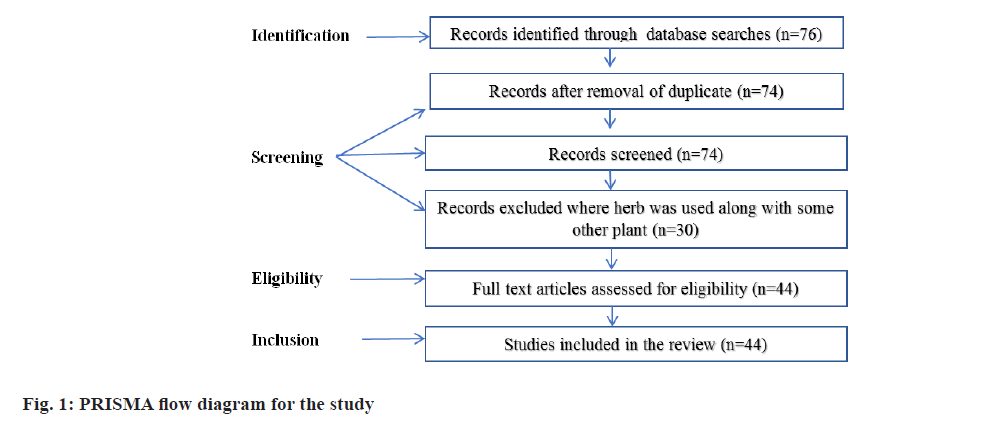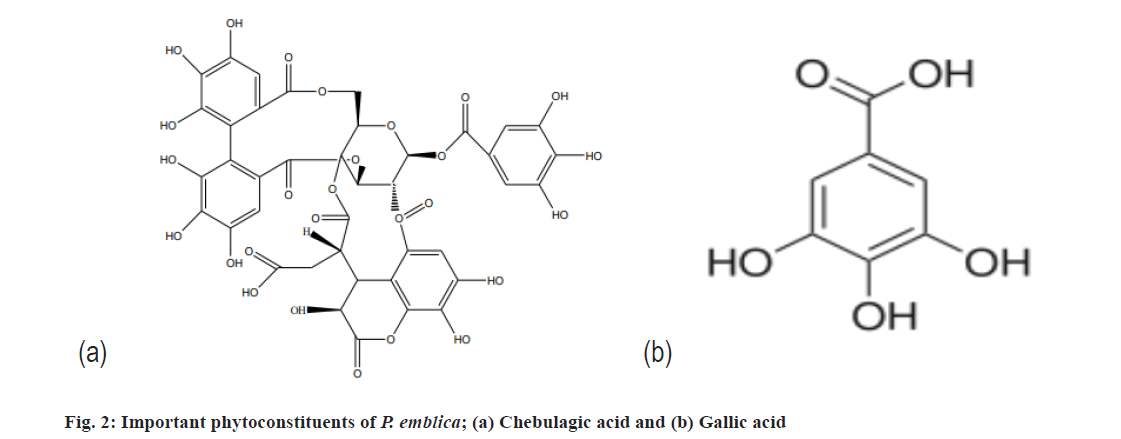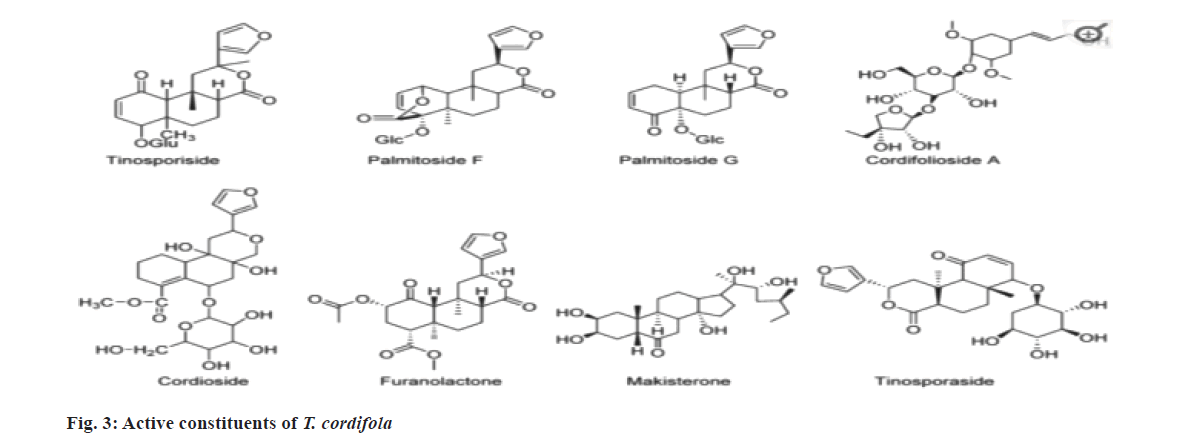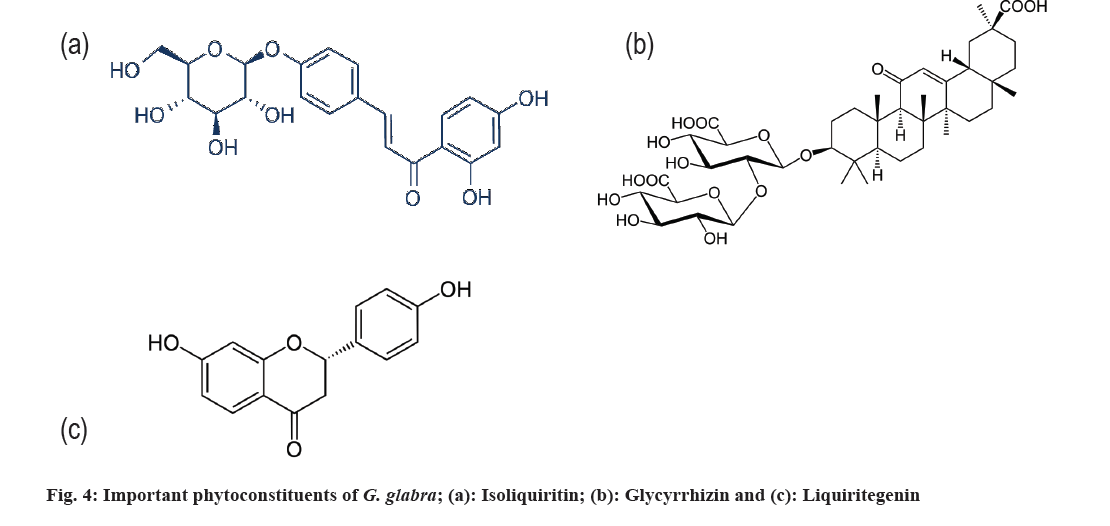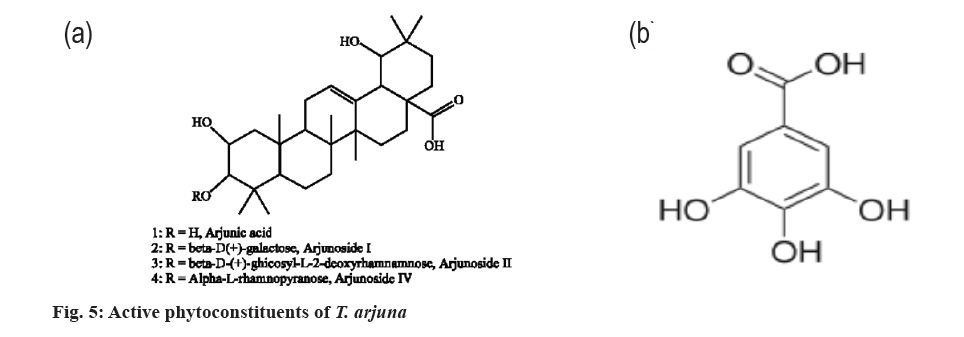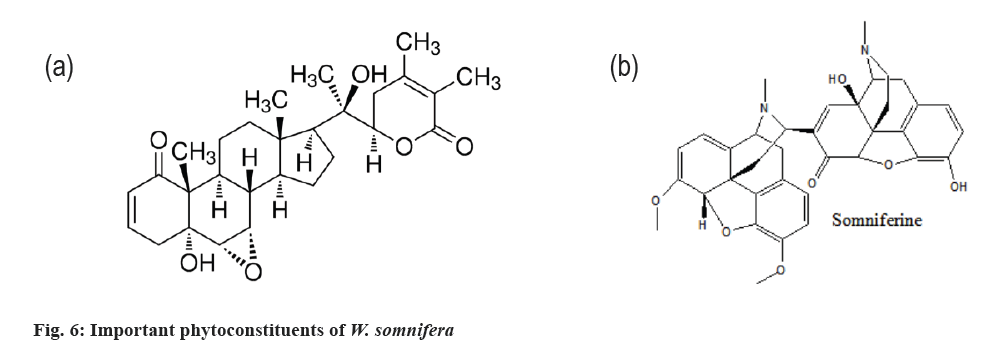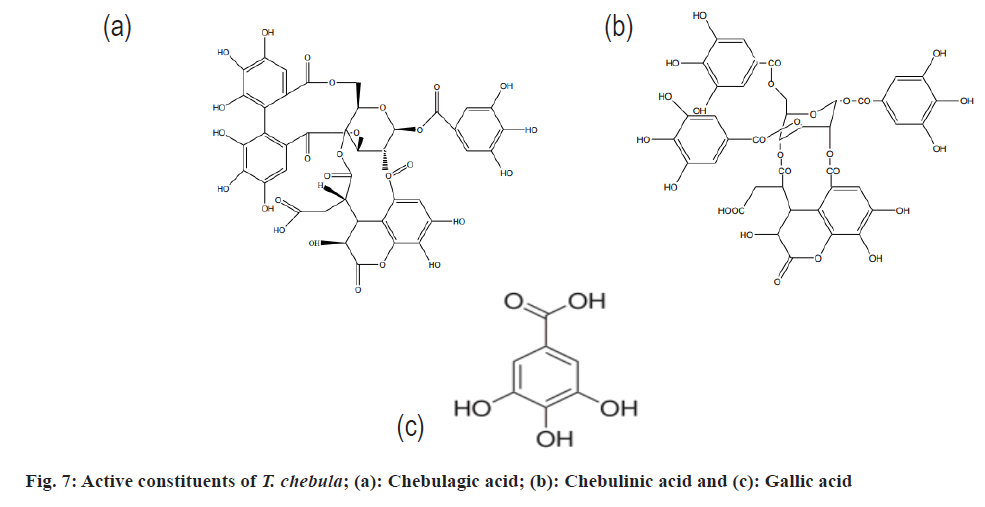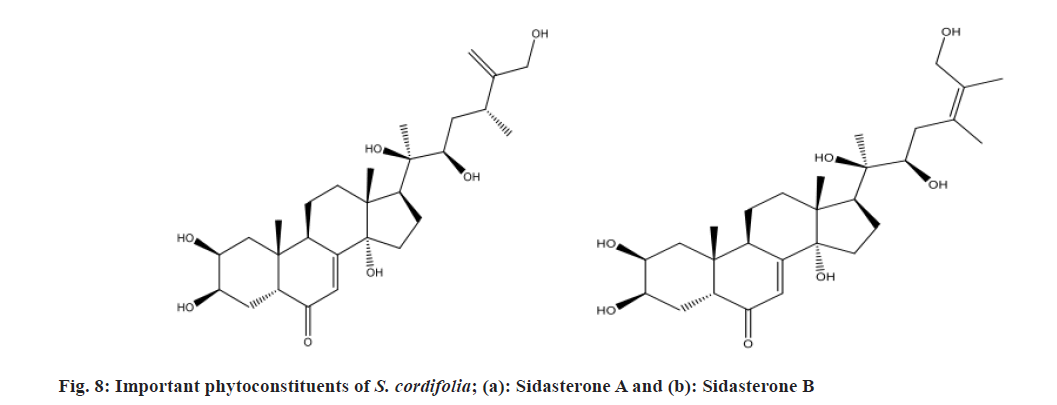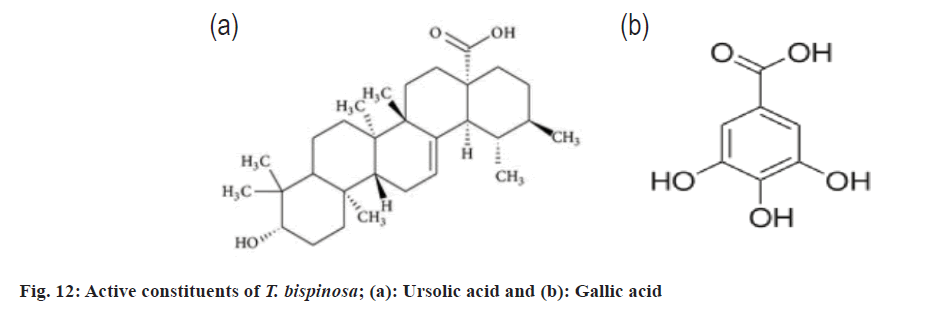- *Corresponding Author:
- Bharati Gawade
Department of Pharmacognosy, Principal K. M. Kundnani College of Pharmacy, Mumbai, Maharashtra 400005, India
E-mail: gawadebharti37@gmail.com
| Date of Received | 30 November 2023 |
| Date of Revision | 07 May 2024 |
| Date of Acceptance | 26 August 2024 |
| Indian J Pharm Sci 2024;86(4):1218-1229 |
This is an open access article distributed under the terms of the Creative Commons Attribution-NonCommercial-ShareAlike 3.0 License, which allows others to remix, tweak, and build upon the work non-commercially, as long as the author is credited and the new creations are licensed under the identical terms
Abstract
Worldwide, cardiovascular diseases are becoming a major concern of morbidity and mortality. This holds true in spite of preventive, diagnostic and treatment measures being used in the modern era of allopathic medicines. Herbal medicines can be used to treat and manage cardiovascular diseases as per their ethnomedical usage. There is dire need to explore the plant biodiversity for its medicinal and pharmacological potentials. Purpose of this review is to summarize evidences regarding cardioprotective potential of different herbs claimed to be cardioprotective as per ethnomedical use. PubMed, ScienceDirect, Google, Google Scholar and Cochrane databases were searched from 1966 to 2023 for the english literature using the terms medicinal plants together with different terms such as cardioprotective, heart disease, hyperlipidaemia, hypertension, ischaemia, oxidative stress. Investigations involving about 76 articles including research articles, meta-analyses, observational studies, reviews were retrieved and analyzed in line with the stated purpose of this study. 44 articles concerning the heart protective effects of 13 ethnomedicinal plants were included in the review. Heart protective effects of medicinal plants are attributed to their antioxidant, vasorelaxant, anti-inflammatory, anti-proliferative properties. Herbs are also reported to inhibit endothelial cell dysfunction, platelet aggregation and lipid peroxidation. Prevention from doxorubicin as well as isoproterenol cardiotoxicity and myocardial ischaemia reperfusion injury has been shown. Published evidence suggests a positive correlation between the use of medicinal plants claimed to be cardioprotective and heart protection. The use of medicinal plants in cardiovascular biology thus needs to be outlined by researchers and the medical community. The novelty and exhaustiveness of the present manuscript is reflected by the detailed outline of the molecular basis of herbal cardio-protection, active involvement of several herbs in ameliorating the cardiovascular status and the clinical studies considering the use of phytotherapy, all on a single platform.
Keywords
Herbal medicine, health management, antioxidants, Emblica officinalis
Cardiovascular Diseases (CVDs) affect many millions of individuals every year and they are the leading cause of death globally, with an estimate of 31 %[1]. The broad umbrella of CVDs spans diverse impairments including ischemic heart disease, dyslipidaemias, thromboembolic disease and heart failure among several others. Moreover, cardiovascular system related conditions and disorders are seeking attention during the time of Coronavirus Disease 2019 (COVID-19) due to the surge in fatalities reported with cardiovascular comorbidities[2]. Post recovery from the acute phase of COVID-19 infection, patients were reported to have increased risks of an array of cardiovascular problems, including heart muscle inflammation, blood clots, strokes, myocardial ischemia and heart failure[3].
Overall incidence of cardiovascular risk factors such as sedentary life-style, obesity, diabetes, smoking, alcoholism is increasing in the population. Endothelial cell dysfunction, oxidative stress, inflammation, vascular smooth muscle cell proliferation are the key pathophysiological causative factors underlying onset and progression of CVDs. Cardioprotection includes all mechanisms and means that contribute to the preservation of heart by reducing or even preventing myocardial damage[4].
Allopathic medicines used management of CVDs are associated with adverse effects[5]. This becomes more of a concern as CVD management is long term. Allopathic medications may have limitations in terms of offering all the mechanisms and means that contribute to the preservation of the heart by reducing or even preventing myocardial damage.
In light of the above, herbs have emerged as an alternative approach to counter the onset and progression of CVDs. Currently, there is an unprecedented drive for the use of herbal medicines in modern era of allopathic medicines. This drive is powered by several aspects, prime among which are their cost-effective therapeutic promise compared to standard modern therapies and their safety profile. Herbal remedies have multimodal action, such as antioxidant, vasorelaxant, anti-inflammatory, anti-proliferative effects. They are reported to inhibit endothelial cell dysfunction, platelet aggregation and lipid peroxidation. Because of a wide range of molecular and cellular targets, herbal medicines can be used to treat and manage CVDs[2].
Considering this notion, in this review, the role of phytotherapy in combating CVDs is emphasized. The review summarizes evidences regarding heart protective potential of different herbs claimed to be cardioprotective. It also discusses the mechanistic insights that allow herbs to counter CVDs.
Literature Review
Studies relating to the use of heart protective effects of 13 medicinal plants were mined by strategically searching scientific databases including Google Scholar, Google, PubMed, ScienceDirect, Cochrane. The searches were done from 1966 to 2023 for the english literature using the terms medicinal plants together with different terms such as cardioprotective, heart disease, hyperlipidaemia, hypertension, ischaemia, oxidative stress. Investigations involving about 76 articles including research articles, meta-analyses, observational studies, reviews were retrieved and analyzed in line with the stated purpose of this study. 44 articles concerning the heart protective effects of 13 ethnomedicinal plants were included in the review. Process depicted in fig. 1.
Medicinal plants with cardioprotective potential
Phyllanthus emblica (P. emblica) or Emblica officinalis(E. officinalis) is a small to medium sized deciduous tree belonging to family Euphorbiaceae. The fruit of the plant is medically most important. Its fruit is reported to possess potent free radical scavenging, antioxidant, anti-inflammatory activities which contribute towards its efficacy in the prevention and treatment of various diseases like cancer, diabetes, liver and heart diseases. Most importantly, it is reported to strengthen the heart muscles. Its main constituents as depicted below in fig. 2 are phenolic compounds like gallic acid, pyrogallol, ellagic acid; tannins like emblicanin A and B, punigluconin, pedunculagin, chebulinic acid (ellagitannin), chebulagic acid (benzopyran tannin), corilagin; alkaloids like phyllantine, phyllembein, phyllantidine and ascorbic acid[6].
The fruit extract affects a variety of cardiovascular parameters and has diverse cardiovascular pharmacological activities including anti-atherogenic, anticoagulant, anti-dyslipidemic, anti-hypertensive, anti-inflammatory, antioxidant, antiplatelet, vasodilatory and lipid deposition inhibitory effects. Moreover, it improves vascular endothelial function and prevents from both myocardial ischemia/reperfusion injury and doxorubicin and isoproterenol induced cardiotoxicity[7].
A study done by Thirunavukkarasu et al.[8] in Sprague-Dawley rats showed that P. emblica was capable of upregulating the phosphoinositide-3-kinase-protein kinase B/glycogen synthase kinase 3β/β-catenin cardioprotective pathway, thereby preserving cardiac tissue during ischemia-reperfusion injury. E. officinalis supplementation was found to be beneficial against high fat induced vascular alterations in terms of functions and architecture[9]. In a clinical study, treatment with E. officinalis produced significant reduction of total cholesterol, low density lipoprotein, triglyceride and very low density lipoprotein and a significant increase in high density lipoprotein levels[10]. Treatment with P. emblica reduced biomarkers of oxidative stress, systemic inflammation and brought about improvement in endothelial function in patients with type 2 diabetes mellitus[11]. Some high-quality clinical studies report the vasodilatory and myocardial antioxidant properties as well as anti-platelet aggregation effects of this plant. No significant adverse effects have been reported in limited number of published clinical studies.
Tinospora cordifolia (T. cordifolia) is a deciduous climbing shrub belonging to Menispermaceae family. Medically important part of the plant is root. It is found throughout the tropical India. Ethnomedical uses of the plant comprise of heart diseases associated with pain, urinary disorder, skin diseases, diabetes, anemia, inflammation, allergic condition. According to ayurvedic and tribal medicinal system, the roots and stem of this plant are highly important. They possess cardioprotective property. Their important phytoconstituents are alkaloids like tinosporine, berberine, choline; triterpenoids like tinosporide, furanolactone diterpene (fig. 3)[12].
In a study done on Wistar rats, T. cordifolia effectively prevented the alteration in levels of serum marker enzymes (creatine kinase and lactate dehydrogenase), antioxidants, glycoproteins contents by Cadmium (Cd) intoxication. The study suggests T. cordifolia as a potent cardioprotective agent against Cd induced toxicity[13]. Cardioprotective activity of T. cordifolia is reported in ischemia-reperfusion induced myocardial infarction in rat[14]. Surgical occlusion of coronary artery was performed to induce myocardial ischemia and then reperfusion for 4 h. Results showed that T. cordifolia treatment reduced the infarct size and decreased the lipid peroxide level compared to control group, indicating the cardioprotective activity of this plant. Antioxidant activity of T. cordifolia and inhibition of lipid peroxidation have been reported. The cardioprotection may be due to its free radical scavenging activity or indirectly by enhancing the endogenous antioxidant levels or by protecting Mg2+ dependent Ca2+ ATPase enzyme or by antagonizing free radical mediated inhibition of sarcolemmal Na-K-ATPase activity or by Ca2+ channel blocking activity[14]. T. cordifolia is also able to reduce Nuclear Factor kappa B (NF-κB) signalling by inhibiting phosphatidylinositol 3-kinase/protein kinase B (PI3K/Akt), activating 5' Adenosine Monophosphate-activated protein Kinase (AMPK) and sirtuins and downregulating PI3K/Akt[15].
Sharma et al., studied the hypolipidemic effect of an aqueous extract of the root on the rats that resulted in decrease tissue cholesterol, reduction in serum, phospholipids and free fatty acid in alloxan diabetic rats[12]. Lowering the serum lipids level decreased the risk of vascular disease. In a clinical study done in 26 subjects, T. cordifolia modulated lipid metabolism by inhibiting cholesterol and glucuronides synthesis[16]. T. cordifolia safety profile was confirmed in a toxicological analysis[15].
Glycerrhiza glabra (G. glabra) is an herbaceous perennial belonging to Fabaceae family. In terms of the medicinal value root is very important. The main constituents are saponin like glycyrrhizin; flavonoids like liquiritigenin (4′,7?dihydroxyflavanone) and isoliquiritigenin (fig. 4)[17].
Because of its antioxidant and anti-inflammatory activities, it has potential in management of CVDs. In Isoproterenol (ISP)-induced myocardial injury in rats, G. glabra treatment exerted cardioprotection by reducing oxidative stress, augmenting endogenous antioxidants and restoring functional parameters as well as maintaining structural integrity[18]. Study done on G. glabraagainst ischemia-reperfusion induced injury in rats suggested cardioprotective potential of G. glabra against myocardial infarction by amelioration of oxidative stress and favourable modulation of cardiac function[19]. The appearance of normal histoarchitecture of myocardium in a preclinical study indicates the safety of the used therapeutic doses of G. glabra on myocardium[18].
Terminalia arjuna(T. arjuna) is a large size deciduous plant that belongs to the Combretaceae family. Its bark extract is being used in the Indian subcontinent for anginal pain, hypertension, congestive heart failure and dyslipidemia. The major constituents of bark are triterpenoids like arjunin, arjunic acid and arjungenin; polyphenol like gallic acid; tannins like pyrocatechols, punicallin, punicalagin, terchebulin, terflavin C, casuariin and casuarnin; flavonoids like arjunoline, bicalein, quercetin, kempferol and pelorgonidin (fig. 5)[20].
Dwivedi et al.[20] has reported that T. arjuna bark extract showed significant prevention of isoprenaline?induced increase in oxidative stress and decline in endogenous antioxidant level as well as coronary vasodilatation thereby showing cardioprotective effect in isoprenaline?induced Myocardial Ischemia (MI) study in rats[20]. In a study done on 30 patients of stable angina/post?infarct angina, administration of T. arjuna bark powder led to decrease in mean anginal frequency, significant improvement in Electrocardiogram (ECG) changes, and reduction in plasma cortisol and serum cholesterol levels[20]. Lipoprotein lowering effects and inhibition of platelet adhesion contributing to cardioprotective efficacy has also been reported with T. arjuna in clinical studies[21]. T. arjunais found to inhibit NF-κB and thus prevent plaque progression. Treatment with T. arjuna activates the Peroxisome Proliferator-Activated Receptor gamma (PPAR-γ) by inhibiting the NF-κB, which reduces the action of Interleukin-18 (IL-18) and also inhibiting the expression of other cytokines, chemokines and adhesion molecules which contribute to inhibition of plaque progression[22]. One more clinical study involving a herbo-mineral preparation which was containing T. arjuna, known as abana, was found to have antithrombotic activity[21]. This drug could significantly inhibit platelet adhesion and adenosine diphosphate and adrenaline-induced platelet aggregation. The drug has shown promising effect on ischemic cardiomyopathy. So far, no serious side effects have been reported with T. arjunatherapy[20].
Withania somnifera (W. somnifera) is a woody shrub belonging to Zygophyllaceae family. Its medicinally useful part is root. Main constituents of root are saponins, phenolics, flavonoids, alkaloids like somniferine, somniferinine, withamine, withanmine; steroidal lactones named withanolides (e.g. Withanolide A) (fig. 6).
The plant is used to treat several diseases such as fever, cancer, asthma, diabetes, ulcer, arthritis and heart problems[23]. W. somnifera exerts strong cardioprotective effect in the experimental model of isoprenaline-induced myonecrosis in rats. Augmentation of endogenous antioxidants, maintenance of the myocardial antioxidant status and significant restoration of most of the altered haemodynamic parameters may contribute to its cardioprotective effect[24]. In Wistar rats, doxorubicin-induced biochemical and histological alterations were effectively attenuated by prior administration of W. somnifera extract. This suggests a role of W. somnifera in protection against cardiotoxicity induced by doxorubicin[24]. Root powder of the plant when orally administered to hypercholesteremic rats reduced total lipid cholesterol and triglycerides contents in subject animals. A significant increase in high-density lipoprotein cholesterol level, liver bile and 3-hydroxy-3-methylglutyral-coenzyme A reductase activity was also observed[25]. Histopathological studies have noted that the administration of W. somnifera significantly reduces damage to the heart caused by ischemia. Its cardioprotective effect is reported due to its anti-apoptotic properties and due to its restoring of the oxidative balance. The anti-apoptotic properties are due to an increase in AMPK phosphorylation and an increase in the B-cell lymphoma-2 (Bcl-2)/Bcl-2 Associated X-protein (Bax) ratio (AMPK) and by restoring oxidative balance[26]. Shenoy et al. in their study, confirmed that the group receiving W. somnifera supplementation had significant improvements in several measures of cardiorespiratory endurance compared to the placebo group[27]. This study done on a group of 80 healthy individuals also reported lack of toxicity associated with W. somnifera[27].
Terminalia chebula (T. chebula) is a flowering, evergreen tree belonging to the Combretaceae family. Its fruit is mild laxative, stomachic, tonic. It is reported to be beneficial in diabetes, skin diseases and heart diseases. The main constituents of fruit are tannins like chebulagic acid, punicalagin, chebulanin, neochebulinic acid, chebulinic acid; polyphenols like ellagic acid, gallic acid, corilagin, galloyl glucose, punicalagin, terflavin A[28]. As reported by Bag et al.[28], T. chebula extract pre-treatment was found to ameliorate the effect of isoproterenol on lipid peroxide formation in rats and retained the activities of the diagnostic marker enzymes thereby proving its cardioprotective effect (fig. 7)[28].
T. chebula extract reduced rise in lactate; decrease in enzyme activities of Tricarboxylic Acid (TCA) cycle, mitochondrial respiration, levels of Adenosine Triphosphate (ATP) in isoproterenol induced cardiotoxicity in rats. The results document anti-ischemic property of T. chebula[29]. As reported by Pingali et al.[30], T. chebula improved endothelial function compared to placebo in type 2 diabetic patients and cardiovascular risk indicators were ameliorated in the treatment group compared to placebo in a clinical study done in 60 patients. In this study, all subjects tolerated the therapy well. No serious adverse events were recorded in the study.
Sida cordifolia (S. cordifolia) is an erect herb belonging to family Malvaceae. Its medically important parts are root and leaf. Traditionally, it is used as antirheumatic, analgesic, antipyretic, antiasthmatic, nasal decongestant, antiviral and to treat cardiovascular complaints. The main constituents of root are alkaloids like β-phenethylamines, carboxylated tryptamines, quinazoline alkaloids; vasicine, vasicinone and vasicinol; flavonoids like 5,7-dihydroxy-3- isoprenyl flavones and 5-hydroxy-3-isoprenyl flavones; phytoecdysteroids like sidasterone A and sidasterone B (fig. 8)[31].
In a published study, the influence of S. cordifolia extract on the biochemical and antioxidant profile of serum/perfusate and heart tissue homogenate representing isoproterenol and ischemia reperfusion-induced myocardial infarction in rats, was evaluated. The extract of S. cordifolia displayed protective effects against myocardial infarction[31]. Kubavat et al.[32] reported that pre-treatment with S. cordifolia extract resulted in marked elevation of the levels of Superoxide Dismutase (SOD) and catalase activity when compared to the control in isoproterenol induced ischaemia study. This action indicated the ability of S. cordifolia to induce cardioprotection[32]. Additionally, in vitro studies have documented inhibition of lipid peroxidation[31]. S. cordifolia extract was evaluated by clot lysis assay, acute pulmonary embolism, carrageenan-induced tail vein thrombosis and ferric chloride-induced carotid arterial thrombosis models. Histological studies showed restoration with clear alveolar spaces and less red blood cell congestion. Significant reduction in infarcted length of thrombus, escalation in coagulation parameters with a profound decrease in Platelet Count (PC) was observed. Arterial occlusion time was increased with a reduction in weight of thrombus dose-dependently with significant augmentation in Prothrombin Time (PT) and Activated Partial Thromboplastin Time (APTT). The results demonstrated the antithrombotic and thrombolytic potential of S. cordifolia using in vitro and in vivo experimental models[33]. The aqueous extract of S. cordifolia was tested for toxic effect on viability of PC12 cell line with no signs of toxicity[31].
Tribulus terrestris(T. terrestris) is small hirsute or silky hairy shrub, belonging to Zygophyllaceae family. It is medicinally useful part is fruit which consists of saponins like protodioscin, protogracillin, diosgenin; flavonoids like quercetin, kaempferol; alkaloids like tribulusamide D, tribulusterine (fig. 9).
Its ethnomedical uses are diuretic, antidiabetic, hypolipidemic, cardiotonic activities[34]. In a study done in Wistar rats, T. terrestris extract was found to decrease cholesterol-induced hyperlipidemia and Atherogenic Index (AI)[34]. Considering the available literature, the plant could have a potential as an herbal medicine for effective blood pressure control due to its diuretic activity (potassium sparing), antihyperlipidemic activity and cardioprotective activity. Sailaja et al.[35] reported that pretreatment with T. terrestris showed a protective effect against isoproterenol induced Myocardial Infarction (MI) study in rats[35]. T. terrestris was found to be effective against cardiac ischemia in rats which was evident from ECG and various cardiac biomarkers analysis. Antioxidant, antiapoptotic and anti-inflammatory potential of T. terrestris contributes significantly to its anti-ischemic cardioprotection[36]. Also, its ability to decrease lipid profile, lipid peroxidation contributes towards cardioprotection. T. terrestris pre-treatment reduced the phosphorylation of p38α thereby causing upregulation of Bcl-2, triggering the anti-apoptotic pathway and thus preventing cell death. T. terrestris was found to act through the mitogen-activated signalling pathway leading to prevention of apoptosis during ischemic insult[36]. No signs of significant toxicity were noticed in toxicological studies[37].
Terminalia bellerica (T. bellerica) is a large deciduous tree. Its medically important part is fruit. Its main constituents comprise of polyphenols like gallic acid, ellagic acid, methyl gallate, ethyl gallate; lignan like thannilignan, steroids like beta-sitosterol, flavanoids like quercetin and kampferol (fig. 10)[38].
Ethnomedically it is used in management of hypertension and diabetes. T. bellerica reduced the levels of lipids in hypercholesterolemic rabbits[39]. T. bellerica extract had in vitro inhibitory effects on low density lipoprotein oxidation and macrophage inflammatory response, suggesting its use in vivo to inhibit atherosclerosis plaque progression. In animal studies, its anti-hypertensive action is also reported. A broad spectrum in vitro and in vivo animal studies suggested various effects of T. bellerica including antioxidant, anti-inflammatory effects[40]. No signs of toxicity were reported in toxicity studies[38].
Hemidesmus indicus (H. indicus) is a vine which trails on ground and climbs by means of tendrils. The main constituents of root are alkaloids like hemideminine, 2-hydroxy-4-methoxy benzaldehyde; flavonoids, phenolic compounds and tannins[41]. Its traditional uses are for treating diabetes, as an anti-atherogenic and for its anti-inflammatory effects (fig. 11).
H. indicus protects against oxidative stress, hyperlipidemia against high fat diet-induced oxidative stress in rats[42]. Cardioprotective effects of H. indicus are suggested in Langendorff-perfused rat hearts with induced ischaemia. H. indicus might cause vasodilation, positive ionotropic effect and cardioprotection[43]. H. indicus treatment led to an increase in functional recovery of Left Ventricular Developed Pressure (LVDP) (32 %-75 %), increase in Coronary Flow (CF), reduction in number of ectopic beats and duration of ventricular tachycardia. The size of infarction was also significantly decreased by H. indicus[43]. From the toxicity study using albino Swiss mice, it was observed that the drug H. indicus was relatively safe up to 7 g/kg bodyweight dose[44].
Trapa Bispinosa (T. Bispinosa) is an aquatic plant, belonging to family Trapaceae. Its fruit is well known for its medicinal properties. Its main constituents are Triterpenoids like ursolic acid, cycloeuclenol[45]. High quantity of minerals, flavonoids, phenolic compounds, vitamins are present in it (fig. 12).
The fruit of the plant is used as nutritional aid. Significant antioxidant activity of Trapa bispinosa has been reported in studies performed in vitro[46]. Due to high quantity of minerals and vitamins, Trapa bispinosa shows anti-inflammatory effect. Its antioxidant and anti-inflammatory potential suggests its use in management of CVDs. The fruit contains good amount of potassium. Studies have shown that people who consume good amount of potassium have a significantly lower risk for high blood pressure and stroke. Toxicity studies have shown safety up to a single dose of 3 g/kg body weight[46].
Mineral Pitch-Shilajit(Asphaltum Punjabianum) is a multi-component natural occurring mineral substance used in Ayurveda and Siddha systems of medicine. Research at Banaras Hindu University in India reveals via chemical analysis that Shilajit is the result of the humification of resin and latex bearing plants including Euphorbia royleana and Trifolium repensator because it prevents ailment and enhances the quality of life. Shilajit has been used in nervous, diabetic, immune, cardiac, asthma, joint disorders. It comprises of resins, benzoic acid, hippuric acid, fulvic acid, humic acid and minerals like silica, iron, antimony, calcium, copper, lithium, magnesium, manganese, molybdenum, phosphorus, sodium, strontium, zinc[47]. Prominent cardioprotective effect of Shilajit against destructive effects of isoproterenol were reported in a study done in rats[48]. Various research studies indicate that Shilajit exhibits antioxidant, anti-inflammatory and anti-dyslipidemic properties (fig. 13)[47].
Commiphora mukul (C. mukul) is a woody shrub belonging to family Burseraceae. The part used is gum guggal. The extract of gum guggal, called gugulipid has been used in Unani and Ayurvedic medicine, for many centuries. It is used to treat inflammation, gout, rheumatism, obesity and disorders of lipid metabolism. Diterpenoids-α-camphorene, cembrene-A;steroidslikeguggulsterone (fig. 14).
Treatment with guggulsterone at a dose of 50 mg/kg significantly protected cardiac damage as assessed by the reversal of blood and heart biochemical parameters in ischemic rats. It also contains long-chain aliphatic tetrols, aliphatic esters, ferulates, lignans, carbohydrates and a variety of inorganic ions. In isoprenaline-induced myocardial necrosis in rats, cardioprotective effects of C. mukul were shown[47]. C. mukul significantly improved the cardiac function and prevented myocardial ischemic impairment in isoproterenol-induced myocardial infarction in rats[48]. The use of guggal in therapeutic doses appears to be safe.
Conclusion
The paper summarizes the existing published literature on heart protective effects of different herbs claimed to be cardioprotective as per ethnomedical use. Evidence outlines that the medicinal plants reviewed in the article govern a variety of cellular mechanisms such as antioxidant, vasorelaxant, anti-inflammatory, anti-proliferative involved in cardioprotection. They are also reported to inhibit endothelial cell dysfunction, platelet aggregation and lipid peroxidation. Because of a wide range of molecular and cellular targets, herbal medicines can be used to treat and manage CVDs. The evidences presented in this review are strongly indicative of the notion that the herbal medicines are the source of emerging medicines for the prevention and treatment of CVDs.
Recommendations
With the previous studies mainly focused on basic research, we need to advance the prospects of the medicinal plants reviewed in the article for clinical utilization against CVD. Large clinical trials are needed to observe its therapeutic effects on patients with CVD especially on the effective therapeutic dosage and safety of long-term administration. We hope this review generates the scientific awareness and interest in the field and provokes that further research by scientists.
Conflict of interest:
The authors declare that they do not have any conflicts of interest.
References
- Shaito A, Thuan DT, Phu HT, Nguyen TH, Hasan H, Halabi S, et al. Herbal medicine for cardiovascular diseases: Efficacy, mechanisms, and safety. Front Pharmacol 2020;11:422.
[Crossref] [Google Scholar] [PubMed]
- AlShahrani I, Hosmani J, Shankar VG, AlShahrani A, Togoo RA, Yassin SM, et al. COVID-19 and cardiovascular system-a comprehensive review. Rev Cardiovasc Med 2021;22(2):343-51.
[Crossref] [Google Scholar] [PubMed]
- Abbasi J. The COVID heart—one year after SARS-CoV-2 infection, patients have an array of increased cardiovascular risks. Jama 2022;327(12):1113-4.
[Crossref] [Google Scholar] [PubMed]
- Kübler W, Haass M. Cardioprotection: Definition, classification, and fundamental principles. Heart 1996;75(4):330-3.
[Crossref] [Google Scholar] [PubMed]
- Murkute V, Vyawahare N, Narkhede S, Sarode SP, Pund KV, Kahane MA, et al. Review on polyherbals in management of cardiovascular disease: An ethnopharmacological approach. Modern Med 2011;4(5):6.
- Dasaroju S, Gottumukkala KM. Current trends in the research of Emblica officinalis (Amla): A pharmacological perspective. Int J Pharm Sci Rev Res 2014;24(2):150-9.
- Hashem-Dabaghian F, Ziaee M, Ghaffari S, Nabati F, Kianbakht S. A systematic review on the cardiovascular pharmacology of Emblica officinalis Gaertn. J Cardiovasc Thorac Res 2018;10(3):118.
[Crossref] [Google Scholar] [PubMed]
- Thirunavukkarasu M, Selvaraju V, Tapias L, Sanchez JA, Palesty JA, Maulik N. Protective effects of Phyllanthus emblica against myocardial ischemia-reperfusion injury: The role of PI3-kinase/glycogen synthase kinase 3β/β-catenin pathway. J Physiol Biochem 2015;71:623-33.
[Crossref] [Google Scholar] [PubMed]
- Patil BS, Kanthe PS, Reddy CR, Das KK. Emblica officinalis (Amla) ameliorates high-fat diet induced alteration of cardiovascular pathophysiology. Cardiovasc Hematol Agents Med Chem 2019;17(1):52-63.
[Crossref] [Google Scholar] [PubMed]
- Gopa B, Bhatt J, Hemavathi KG. A comparative clinical study of hypolipidemic efficacy of Amla (Emblica officinalis) with 3-hydroxy-3-methylglutaryl-coenzyme-A reductase inhibitor simvastatin. Indian J Pharmacol 2012;44(2):238-42.
[Crossref] [Google Scholar] [PubMed]
- Usharani P, Fatima N, Muralidhar N. Effects of Phyllanthus emblica extract on endothelial dysfunction and biomarkers of oxidative stress in patients with type 2 diabetes mellitus: A randomized, double-blind, controlled study. Diabetes Metab Syndr Obes 2013:275-84.
[Crossref] [Google Scholar] [PubMed]
- Sharma P, Dwivedee BP, Bisht D, Dash AK, Kumar D. The chemical constituents and diverse pharmacological importance of Tinospora cordifolia. Heliyon 2019;5(9):1-8.
[Crossref] [Google Scholar] [PubMed]
- Priya LB, Baskaran R, Elangovan P, Dhivya V, Huang CY, Padma VV. Tinospora cordifolia extract attenuates cadmium-induced biochemical and histological alterations in the heart of male Wistar rats. Biomed Pharmacother 2017;87:280-7.
[Crossref] [Google Scholar] [PubMed]
- Rao PR, Kumar VK, Viswanath RK, Subbaraju GV. Cardioprotective activity of alcoholic extract of Tinospora cordifolia in ischemia-reperfusion induced myocardial infarction in rats. Biol Pharm Bull 2005;28(12):2319-22.
[Crossref] [Google Scholar] [PubMed]
- Arunachalam K, Yang X, San TT. Tinospora cordifolia (Willd.) Miers: Protection mechanisms and strategies against oxidative stress-related diseases. J Ethnopharmacol 2022;283:114540.
[Crossref] [Google Scholar] [PubMed]
- Kumari S, Mittal A, Dabur R. Moderate alcohol consumption in chronic form enhances the synthesis of cholesterol and C-21 steroid hormones, while treatment with Tinospora cordifolia modulate these events in men. Steroids 2016;114:68-77.
[Crossref] [Google Scholar] [PubMed]
- Pastorino G, Cornara L, Soares S, Rodrigues F, Oliveira MB. Liquorice (Glycyrrhiza glabra): A phytochemical and pharmacological review. Phytother Res 2018;32(12):2323-39.
[Crossref] [Google Scholar] [PubMed]
- Ojha SK, Sharma C, Golechha MJ, Bhatia J, Kumari S, Arya DS. Licorice treatment prevents oxidative stress, restores cardiac function, and salvages myocardium in rat model of myocardial injury. Toxicol Ind Health 2015;31(2):140-52.
[Crossref] [Google Scholar] [PubMed]
- Ojha S, Golechha M, Kumari S, Bhatia J, Arya DS. Glycyrrhiza glabra protects from myocardial ischemia–reperfusion injury by improving hemodynamic, biochemical, histopathological and ventricular function. Exp Toxicol Pathol 2013;65(1-2):219-27.
[Crossref] [Google Scholar] [PubMed]
- Dwivedi S, Chopra D. Revisiting Terminalia arjuna–an ancient cardiovascular drug. J Tradit Complement Med 2014;4(4):224-31.
[Crossref] [Google Scholar] [PubMed]
- Thakur S, Kaurav H, Chaudhary G. Terminalia arjuna: A potential ayurvedic cardio tonic. Int J Res Appl Sci Biotechnol 2021;8(2):227-36.
- Ramesh P, Palaniappan A. Terminalia arjuna, a cardioprotective herbal medicine-relevancy in the modern era of pharmaceuticals and green nanomedicine-a review. Pharmaceuticals 2023;16(1):126.
[Crossref] [Google Scholar] [PubMed]
- Hamza A, Amin A, Daoud S. The protective effect of a purified extract of Withania somnifera against doxorubicin-induced cardiac toxicity in rats. Cell Biol Toxicol 2008;24:63-73.
[Crossref] [Google Scholar] [PubMed]
- Mohanty I, Arya DS, Dinda A, Talwar KK, Joshi S, Gupta SK. Mechanisms of cardioprotective effect of Withania somnifera in experimentally induced myocardial infarction. Basic Clin Pharmacol Toxicol 2004;94(4):184-90.
[Crossref] [Google Scholar] [PubMed]
- Visavadiya NP, Narasimhacharya AV. Hypocholesteremic and antioxidant effects of Withania somnifera (Dunal) in hypercholesteremic rats. Phytomedicine 2007;14(2-3):136-42.
[Crossref] [Google Scholar] [PubMed]
- Saleem S, Muhammad G, Hussain MA, Altaf M, Bukhari SN. Withania somnifera L.: Insights into the phytochemical profile, therapeutic potential, clinical trials, and future prospective. Iran J Basic Med Sci 2020;23(12):1501.
[Crossref] [Google Scholar] [PubMed]
- Mikulska P, Malinowska M, Ignacyk M, Szustowski P, Nowak J, Pesta K, et al. Ashwagandha (Withania somnifera)-Current research on the health-promoting activities: A narrative review. Pharmaceutics 2023;15(4):1057.
[Crossref] [Google Scholar] [PubMed]
- 28. Bag A, Bhattacharyya SK, Chattopadhyay RR. The development of Terminalia chebula Retz.(Combretaceae) in clinical research. Asian Pacific journal of tropical biomedicine. 2013;3(3):244-52. [Crossref] [Google Scholar] [PubMed]
- Suchalatha S, Srinivasan P, Devi CS. Effect of T. chebula on mitochondrial alterations in experimental myocardial injury. Chem Biol Interact 2007;169(3):145-53.
[Crossref] [Google Scholar] [PubMed]
- Pingali U, Sukumaran D, Nutalapati C. Effect of an aqueous extract of Terminalia chebula on endothelial dysfunction, systemic inflammation, and lipid profile in type 2 diabetes mellitus: A randomized double?blind, placebo?controlled clinical study. Phytother Res 2020;34(12):3226-35.
[Crossref] [Google Scholar] [PubMed]
- Galal A, Raman V, A Khan I. Sida cordifolia, a traditional herb in modern perspective–a review. Curr Tradit Med 2015;1(1):5-17.
- Kubavat JB, Asdaq SM. Role of Sida cordifolia L. leaves on biochemical and antioxidant profile during myocardial injury. J Ethnopharmacol 2009;124(1):162-5.
[Crossref] [Google Scholar] [PubMed]
- Gul H, Jabeen Q. Evaluation of Sida cordifolia L. for its potential against thrombosis in experimental models. Pak J Pharm Sci 2022;35.
- Chhatre S, Nesari T, Somani G, Kanchan D, Sathaye S. Phytopharmacological overview of Tribulus terrestris. Pharmacogn Rev 2014;8(15):45.
[Crossref] [Google Scholar] [PubMed]
- Sailaja KV, Shivaranjani VL, Poornima H, Rahamathulla SM, Devi KL. Protective effect of Tribulus terrestris L. fruit aqueous extracton lipid profile and oxidative stress in isoproterenol induced myocardial necrosis in male albino Wistar rats. Excli J 2013;12:373-83.
[Google Scholar] [PubMed]
- Reshma PL, Binu P, Anupama N, Vineetha RC, Abhilash S, Nair RH, et al. Pretreatment of Tribulus terrestris L. causes anti-ischemic cardioprotection through MAPK mediated anti-apoptotic pathway in rat. Biomed Pharmacother 2019;111:1342-52.
[Crossref] [Google Scholar] [PubMed]
- ?tef?nescu R, Tero-Vescan A, Negroiu A, Auric? E, Vari CE. A comprehensive review of the phytochemical, pharmacological, and toxicological properties of Tribulus terrestris L. Biomolecules 2020;10(5):752.
[Crossref] [Google Scholar] [PubMed]
- Kumari S, Joshi AB, Gurav S, Bhandarkar AV, Agarwal A, Deepak M, et al. A pharmacognostic, phytochemical and pharmacological review of Terminalia bellerica. J Pharmacogn Phytochem 2017;6(5):368-76.
- Shaila HP, Udupa AL, Udupa SL. Preventive actions of Terminalia belerica in experimentally induced atherosclerosis. Int J Cardiol 1995;49(2):101-6.
- Gupta A, Kumar R, Bhattacharyya P, Bishayee A, Pandey AK. Terminalia bellirica (Gaertn.) roxb.(Bahera) in health and disease: A systematic and comprehensive review. Phytomedicine 2020;77:153278.
[Crossref] [Google Scholar] [PubMed]
- Swathi S, Amareshwari P, Venkatesh K. Phytochemical and pharmacological benefits of Hemidesmus indicus: An updated review. J Pharmacogn Phytochem 2019;8(1):256-62.
- Venkateshan S, Subramaniyan V, Chinnasamy V, Chandiran S. Anti-oxidant and anti-hyperlipidemic activity of Hemidesmus indicus in rats fed with high-fat diet. Avicenna J Phytomed 2016;6(5):516.
[Google Scholar] [PubMed]
- Khandelwal VK, Balaraman R, Pancza D, Ravingerová T. Hemidesmus indicus and Hibiscus rosa-sinensis affect ischemia reperfusion injury in isolated rat hearts. Evid Based Complement Alternat Med 2011;2011(1):802937.
[Crossref] [Google Scholar] [PubMed]
- Kotnis MS, Patel P, Menon SN, Sane RT. Renoprotective effect of Hemidesmus indicus, a herbal drug used in gentamicin?induced renal toxicity. Nephrology 2004;9(3):142-52.
[Crossref] [Google Scholar] [PubMed]
- Adkar P, Dongare A, Ambavade S, Bhaskar VH. Trapa bispinosa Roxb.: A review on nutritional and pharmacological aspects. Adv Pharmacol Sci 2014;2014(1):959830.
[Crossref] [Google Scholar] [PubMed]
- Karmakar UK, Rahman KS, Biswas NN, Islam MA, Ahmed MI, Shill MC, et al. Antidiarrheal, analgesic and antioxidant activities of Trapa bispinosa Roxb. fruits. Res J Pharm Technol 2011;4(2):294-7.
- Stohs SJ. Safety and efficacy of shilajit (mumie, moomiyo). Phytother Res 2014;28(4):475-9.
[Crossref] [Google Scholar] [PubMed]
- Joukar S, Najafipour H, Dabiri S, Sheibani M, Sharokhi N. Cardioprotective effect of mumie (shilajit) on experimentally induced myocardial injury. Cardiovasc Toxicol 2014;14:214-21.
[Crossref] [Google Scholar] [PubMed]
